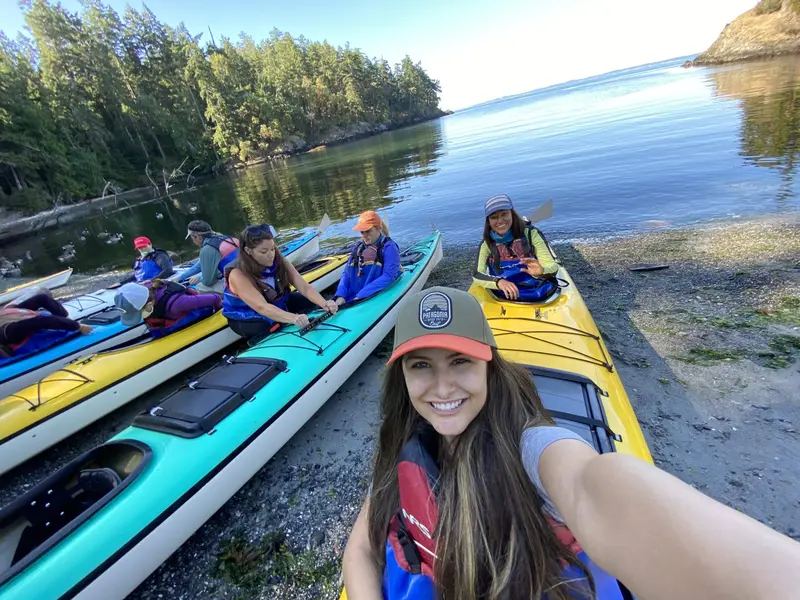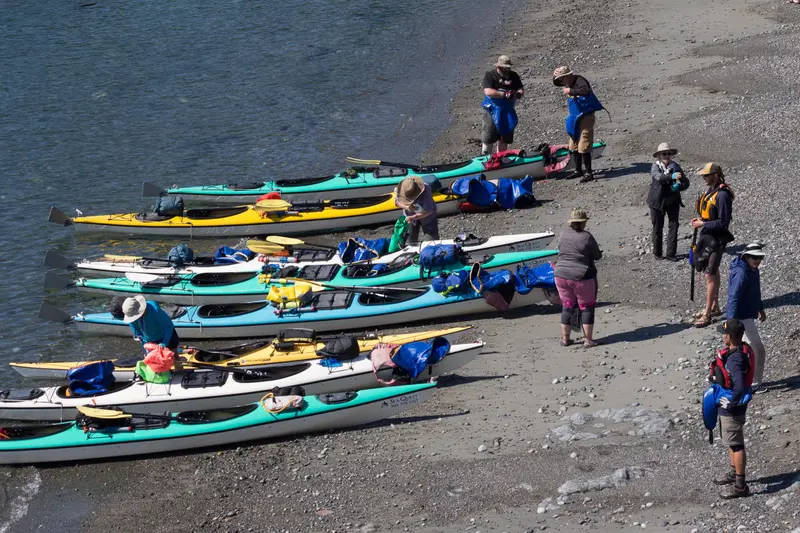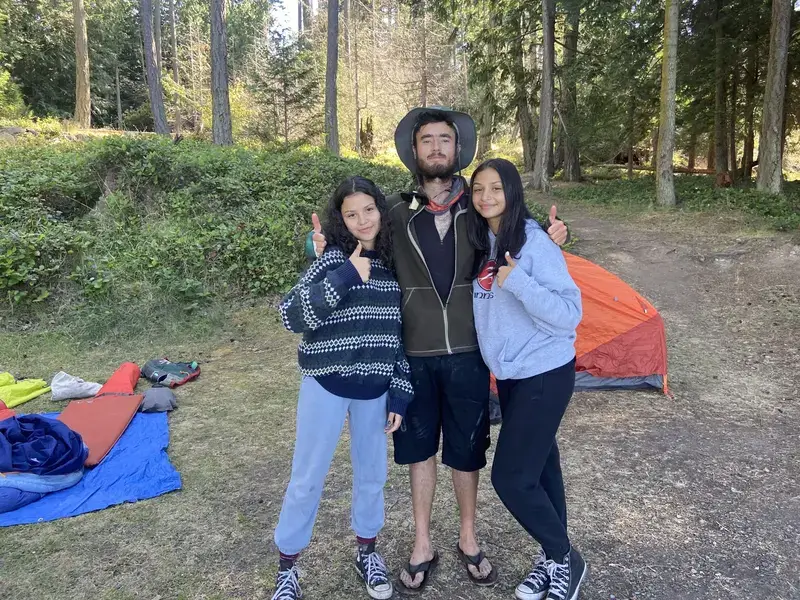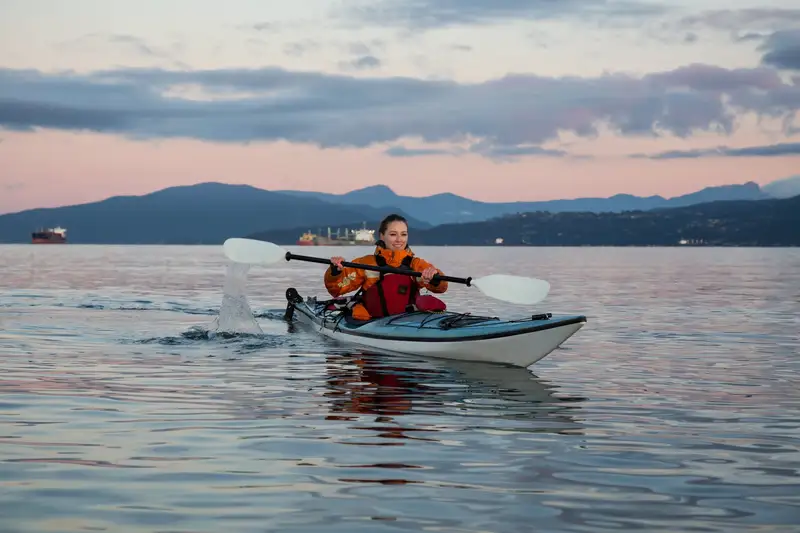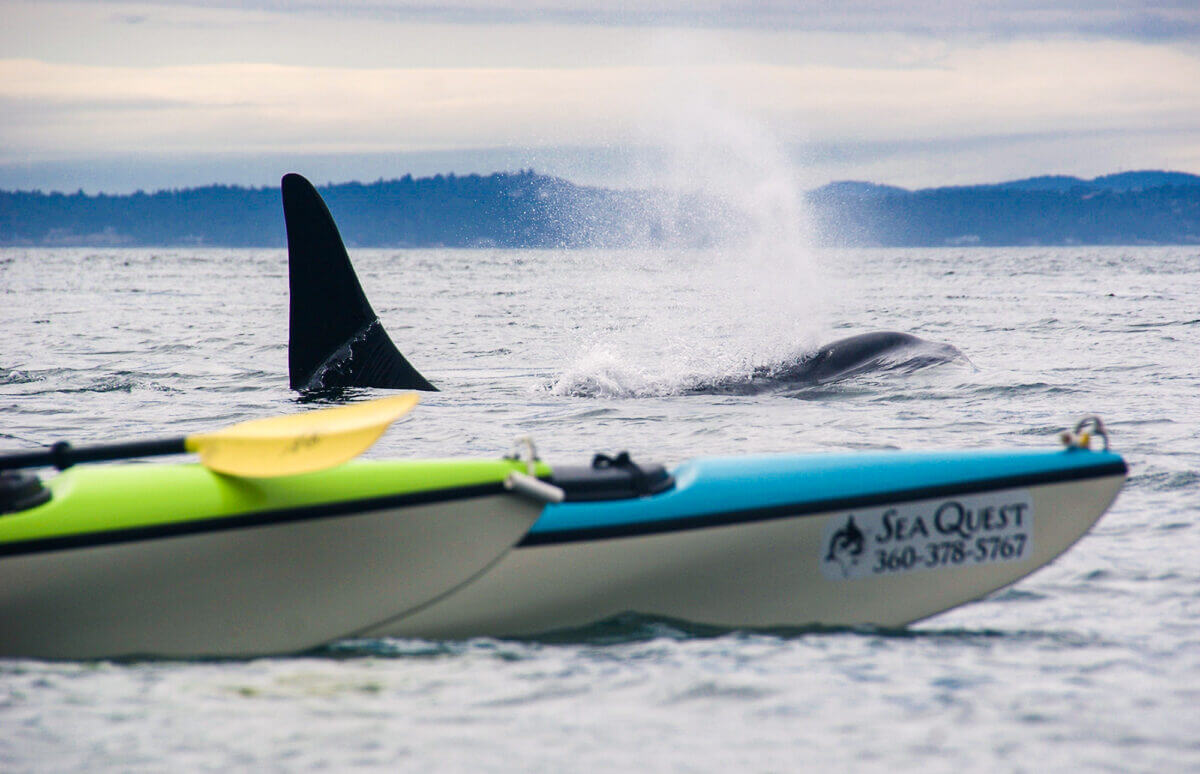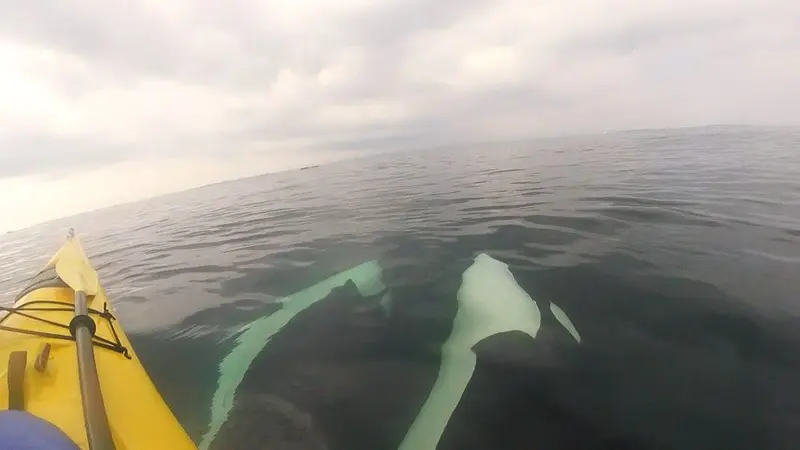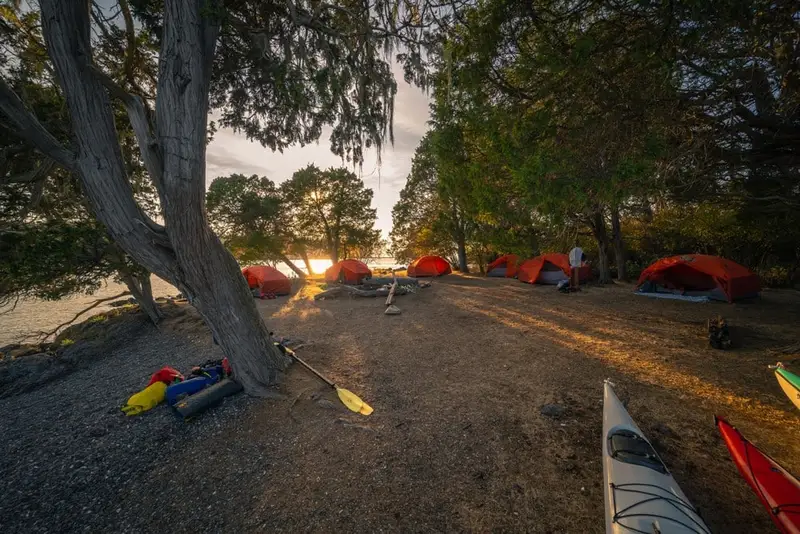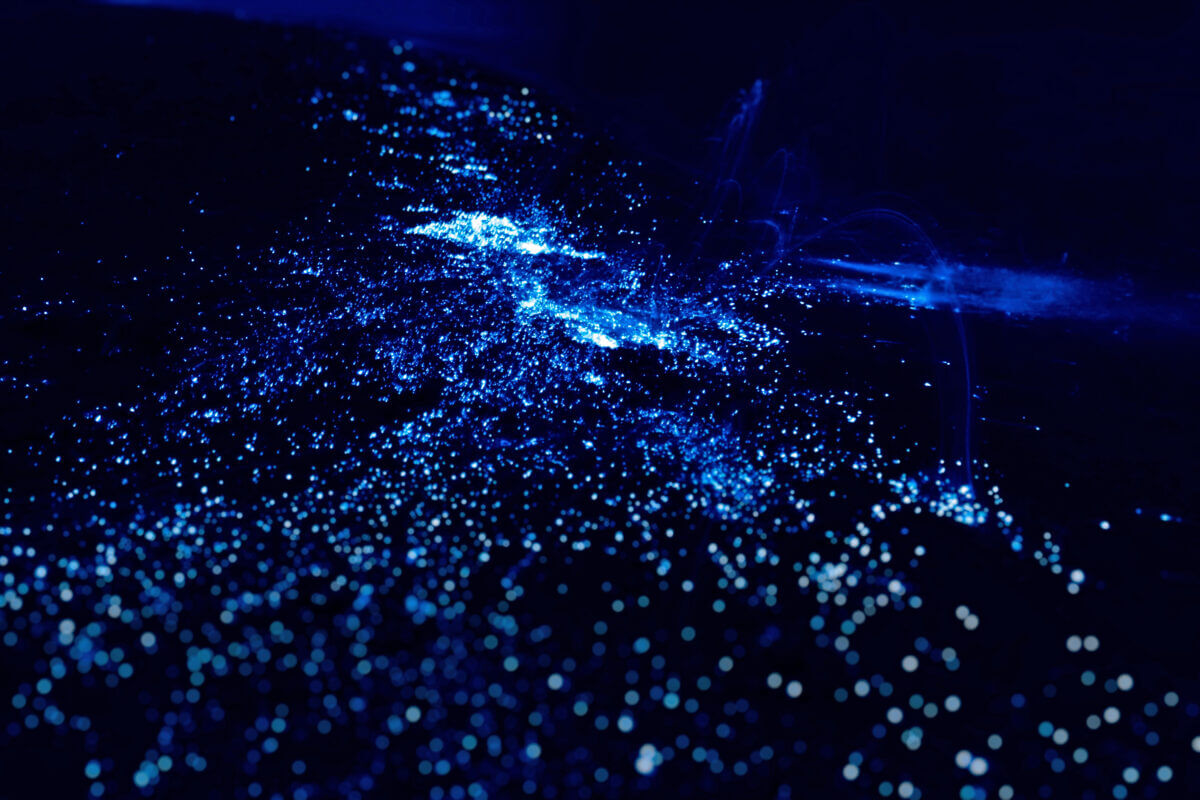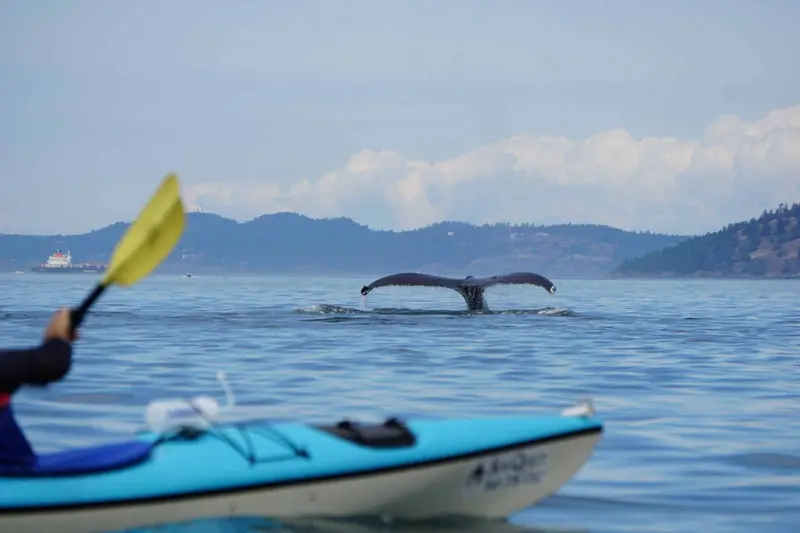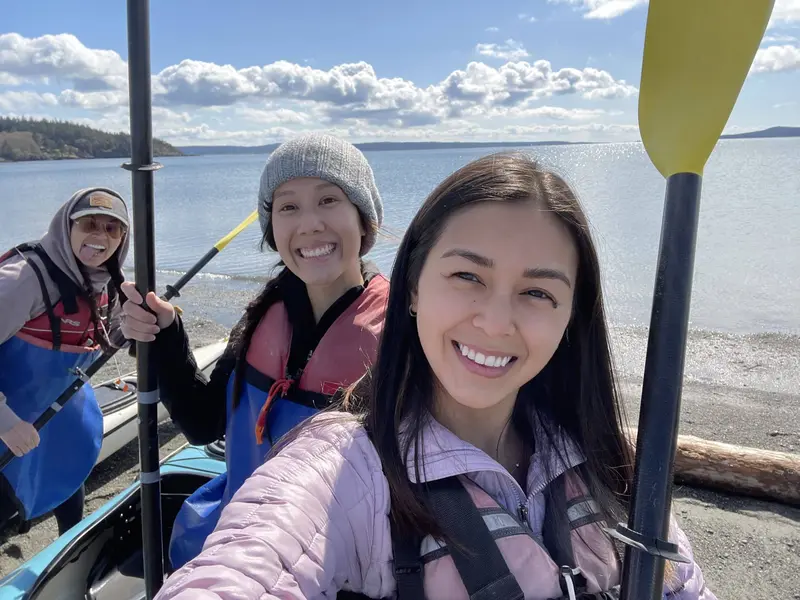Our orca whale watching kayak tours in the San Juan Islands of Washington began well this summer and here is our success report for June.
- Cetaceans (either whales or their small cousins the porpoises) were sighted on 80% of all our kayak tours combined.
- We encountered killer whales on 80% of the camping trips!
- Orca whales were sighted on 100% of our 5-day San Juan kayak expeditions.
- The 3-day San Juan kayaking trips found killer whales on 75% or 6 of 8 tours.
- All but one of the 2-day San Juan kayak tours found the orcas.
- All of the above camping trips saw either Dall’s porpoise or harbor porpoise with the exception of only two tours for 87% success.
- The 1-day San Juan kayaking trips succeeded in finding cetaceans on 74% of the tours in June, with killer whales seen on 41% of the afternoon trips.

Here are some observations and news about killer whales in the San Juan Islands from this past winter and spring:
- The three pods of “resident” orca whale families (the species of killer whale in the Pacific Northwest that specializes in eating almost exclusively salmon) roamed their greater home territory over the winter and at one point were seen as far south as Monterey Bay and as far north as the tip of Vancouver Island in British Columbia.
- During the “resident” orcas’ absence, there was an unusually large presence of “transient” killer whales (the species of orca that eats primarily other marine mammals) through winter and spring in Washington.
- Many pods of the transient killer whales converged on our Steller sea lion haul-out sites in the San Juan Islands. They focused most of their attacks on this huge pinniped that can weigh over 2000 pounds! Some harbor seals and porpoises were also taken by the whales.
- Dall’s porpoises were unusually scarce this spring, possibly remaining further offshore to avoid the large numbers of ‘transient” killer whales that were a constant presence in the San Juan Islands.
- The “resident” orcas gradually returned to their core territory off the west side of San Juan Island in late spring. J-pod was first as usual and became fairly regular in May. K-pod was particularly late and did not become regular until mid-June. L-pod returned as normal in late June.
- Transient orcas moved out of the San Juan Islands as the residents returned. These two species of killer whales do not socialize, inter-breed, eat the same prey, or use the same vocalizations. They are good at avoiding conflict and stay far apart from each other!
- J-pod and all whale lovers lost J-1 this winter. Perhaps the most famous and iconic of our killer whales in the San Juan Islands, Ruffles was the largest and oldest bull orca in the community. Well into his 50’s at his time of death, he sired more calves in recent decades than any other bull orca according to new genetic studies.
- Both K & L-pods each gained new calves to boost the resident orca community population to 88 whales.
- One of the L-pod orcas has spent the majority of the year with J-pod. L-87 may be permanently joining the J-pod family. A sub-group of K-pod orcas is also spending a great deal of time with J-pod.
Remember, our Sea Quest kayak tours explore the best place in the US for watching orca whales, near Seattle, Washington. Thanks to our experience, constant study, and dedication to our mission, our record of success is the best!


